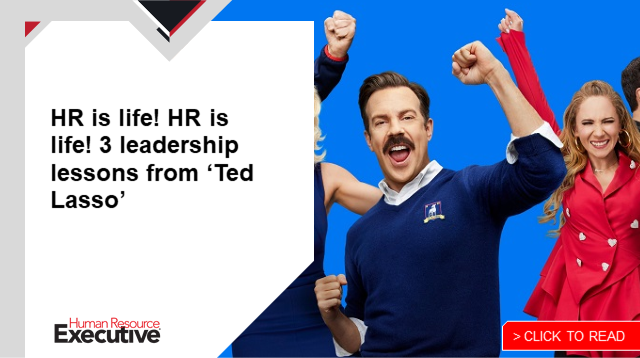Business leaders have typically approached change initiatives with project management tools such as spreadsheets, assigned deliverables and rigid timelines. But now, the relentless pace of change, coupled with current workforce challenges, requires a new approach that is based on iterative and agile practices, employee impact and even human nature.
Recent research from the Josh Bersin Academy, coupled with the ongoing conversations conducted as part of our ongoing Big Reset working groups, show that a traditional approach to change management is no longer sufficient for the rapid change businesses in all sectors are seeing.
This is because traditional change management projects are designed as once-and-done initiatives. However, change requires changing business processes, job responsibilities and assignments, the associated employee behaviors and more—all simultaneously. Not only is a big-bang approach outside the realm of human nature, today’s pace of change just doesn’t allow for lengthy and complex planning.
While old change models can give some comfort in providing a structured approach, they also lead to a false sense of security. Even if you follow a change management methodology “to a T,” something will happen that will disrupt planning. We need to change the paradigm and move away from a focus on management to one that facilitates change and supports employees along the way.
Click here to read more insights from Josh Bersin.
 In companies that successfully manage change, leaders and high performers reinforce the company’s mission and purpose; they explain how their reinvented business models will work; they create cross-functional teams to design and implement change; and they acknowledge that the initiative will never be done. That is, changes to any change process are inevitable. The research shows how companies that build change agility are more profitable, have higher rates of employee engagement and retention, and have happier customers.
In companies that successfully manage change, leaders and high performers reinforce the company’s mission and purpose; they explain how their reinvented business models will work; they create cross-functional teams to design and implement change; and they acknowledge that the initiative will never be done. That is, changes to any change process are inevitable. The research shows how companies that build change agility are more profitable, have higher rates of employee engagement and retention, and have happier customers.
Our research sets out 10 lessons for change agility that hold true not just for the massive business changes brought on by the pandemic, but also for any transformational change. These include transparent communications, human-centered leadership, a clear mission that drives all actions, and rewarding and recognizing behavior changes. All of these practices are very important, but for this article, I’ll highlight just two practices.
Microchanges Result in Macrotransformation
When you think of big transformations, the sheer magnitude of the change involved can seem overwhelming. Big-bang change projects are typically organized to facilitate the work being done by various teams. However, they usually fail to consider human nature when it comes to change and too often don’t include affected employees in the process. The simple fact is that we humans find it difficult to accept a lot of change all at once. Additionally, people adapt to change at different rates. The answer is to look for ways to make incremental changes that, over time, result in significant changes.
Learn more from Bersin during his opening keynote on March 1 at the HR Tech Virtual Conference. Register here.
For instance, Spectrum Health, a healthcare provider with more than 30,000 employees, adapted to hybrid work with a “virtual fishbowl” experiment. Rather than designing strict policies mandating specific attendance rules, the leadership team selected three groups to observe and experiment. Managers observed how employees were navigating the new style of work, shared best practices and identified the tools, strategies and mindset shifts that were needed. With this knowledge in hand, the organization then expanded to new groups and eventually the entire organization. Such incremental experimentation is key to testing a change and gives people the opportunity to learn along the way.
 Related: How hidden HR-data can help identify at-risk workers
Related: How hidden HR-data can help identify at-risk workers
HR Capabilities to Foster Change Agility are Critical
For the last two years, HR teams have been charged with catalyzing change seamlessly and effectively for the workforce, while coping with changes in their own roles and personal lives. In fact, respondents to our Global HR Capability Assessment have put change and transformation as the top priority for HR professionals. However, 40% of HR professionals expressed they lack the skills needed for leading effective change. HR organizations need to provide development opportunities for staff to build the muscle for change management. Here are a few ways to get started:
- Assess capability gaps. Evaluate the current state of HR capabilities in your organization to prioritize development opportunities. The capabilities that matter the most, as we discussed above, include continuous listening; the ability to analyze, interpret and translate data into action; design thinking; and fostering human-centered leadership.
- HR values and needs coaching. Our capability assessment also asks HR professionals to indicate the development opportunities they consider most important for their careers. Coaching and mentoring surfaced as the developmental opportunity that HR professionals consider most important for advancing their skills and capabilities. HR leaders must focus on providing their teams with tailored coaching on short-term capability needs and mentoring to support capabilities important for long-term career growth and business success.
- Leverage capability academies and communities. Capability academies emphasize developing business capabilities and typically include developmental assignments and networks of people for sharing knowledge and information. Kaiser Permanente brought together a change management community of practice with close to 100 people from HR, IT and business operations to share success stories and learn and support each other while dealing with various change initiatives. The community of practice shares knowledge and tools in monthly meetings and in online discussions, with a focus on increasing overall change capacity.
In conclusion, the most important shift to successfully adapt to change is in mindset. We must recognize that every interaction is a change interaction, from the seemingly trivial to the “big” moments. And we need to craft the small moments even more carefully than the big ones; it is in these small moments where we can create readiness and acceptance for change and transformation.
Click HERE for a complimentary copy of the Bersin Academy’s report on change agility.

